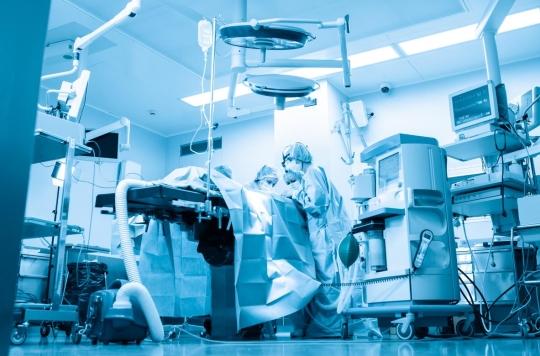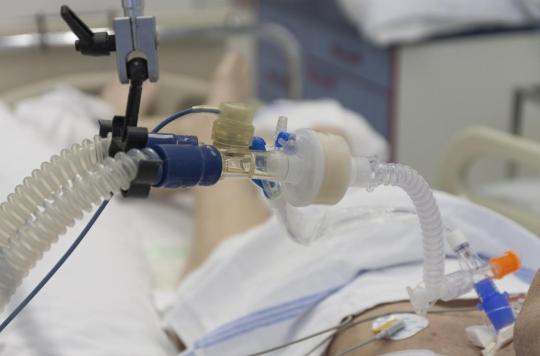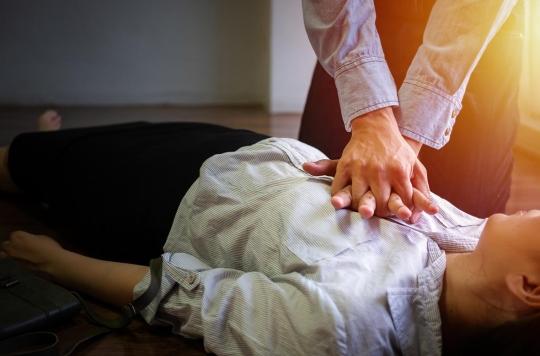In Béziers, a 53-year-old man, found in bradycardia, that is to say a heart which was beating very slowly, and in hypothermia (very low body temperature) survived a cardiac accident and not a stoppage as one the bed everywhere – from 6 pm thanks to the advanced techniques set up by the intensive care unit of the CHU Lapeyronie, in Montpellier. A series of circumstances and advanced resuscitation techniques saved this man. Explanations.

A 53-year-old man hospitalized in the intensive care unit of the CHU Lapeyronie (Béziers) survived an 18-hour cardiac arrest. According to Free noon, he had been found unconscious by his relatives at the edge of a river, the Orb. He was unconscious and his heart was beating very slowly (extreme bradycardia), because having probably spent the night outside, his body temperature had dropped to 22 degrees: he was therefore hypothermic.
Cardiac arrest when firefighters arrive
As soon as they arrived on the scene, the firefighters noticed a cardiac arrest and undertook a cardiac massage. In vain. The SMUR, called on the spot, then connected the man to a machine which provides cardiac massage, the LUCASTM. At the end of 4h30 of cardiac massage, the patient was transported to intensive care where advanced techniques were implemented.
To supplement the heart, the patient was put under “extracorporeal circulation” (or CEC), that is to say that the patient’s blood circulation was ensured, instead of the heart, thanks to an external pump before d. ‘to be reinjected into the body, to all organs.
At the same time, as the different organs do not function well when the temperature is at 22 ° C, they also had to be replaced with other machines, artificial respiration, hemofiltration (a kind of artificial kidney). Once the patient’s situation was stabilized, it was possible to gradually warm the patient’s blood and body and, after 18 long hours, his heart finally restarted, with the help of electric shocks, to again operate autonomously. How to explain such a phenomenon ? Why did the emergency services carry out such a long cardiac massage? What saved this man?
A slow-moving heart ensures minimal supply to the brain
The cardiac arrest was recent when the firefighters arrived on the scene. Otherwise, despite all the efforts made, resuscitation would have been for nothing because the brain and other organs would have been irreparably damaged.
The fact that the body temperature fell to 22 degrees protected these organs by slowing down their functioning and therefore reducing their need for oxygenated blood and loaded with nutrients, contributions that could therefore be provided by a heart in bradycardia.
The drop in temperature occurred slowly, which means that this man gradually fell into a coma, without experiencing a sudden and long cardiac arrest, which would have destroyed his nerve cells. Even a very slow heart provides blood supply to the brain, which is always a priority for the body. It’s written in our genes. It is for this reason that massage, even of poor quality, saves lives by continuing to supply blood to the brain.
Why such a long heart massage?
Generally, the heart messages last much shorter than that given to this man. It is the low body temperature, protective in itself, which justified this extraordinary resuscitation. It has been a long time since emergency responders work on the issue.
Inspired by miraculous survivals during drownings in ice water, they now offer kinds of cooling helmets and freezing substances which, injected very early, increase the survival of the brain for several tens of minutes after a cardiac arrest. . Huge progress.
Former Minister Jean-Pierre Chevènement had benefited from this technique of “refrigeration” of the brain following an innocuous surgical intervention during which an allergy to anesthetic products had caused him a cardiac arrest.
From 1982 to 2014: other miracles of the cold
In January 1982, a young girl had survived an air crash in Washington, United States. Her plane was engulfed in the icy waters of the Potomac: she had then remained several hours without breathing. There too the cold had saved her.
In 2014, a 16-year-old survived after spending five and a half hours in the undercarriage of an aircraft on a flight from San José, California, to Maui, Hawaii. Exposed to a temperature of less than 60 degrees and to the lack of oxygen due to the 11,580 meters altitude of the flight, it is likely that he “lost consciousness at 10,000 feet”, or about 3,000 meters above sea level. , and recovered an hour after landing, according to the FBI. It was then that he stepped onto the tarmac where airline staff discovered him.
Explanation: outside of an airliner, when it is at cruising altitude, it is between -40 and -60 °. But the landing gear housing is relatively isolated from the outside, all the hydraulic systems and the tires having been heated up by the taxiing and taking off of the aircraft. The cold came gradually, the teenager therefore gradually lost consciousness.
The use of cold applied to heart surgery
The principle of using cold to slow down the heart and protect other organs has long been put to good use in heart surgery.
First for interventions that can be performed with a closed heart. The cooling of the heart by ice packs was carried out as early as the 1930s and 1940s, and it allowed the surgical treatment of various heart defects.
Then these heart cooling techniques were applied to open heart surgery and a 5-10 minute stoppage in hypothermia by surface cooling of the heart (26 ° C), which allowed abnormal communications closures to the heart. interior of the heart and stenotic valve dilations. Then, this technique allowed the first coronary bypass operations and it is finally still used during heart transplants.
How much can the body temperature drop?
The average body temperature is 37 ° C. When it drops below 35 ° C, we speak of hypothermia: vital functions are then in danger.
However, we managed to save people, in the mountains or at sea, despite very low body temperatures, such as 17 ° C. But generally, there is very little chance of saving a person whose body temperature drops below 25 ° C, even in a hospital environment, with oxygen and technical means to warm the body. This is to say if the performance of the intensive care team at the Montpellier University Hospital is remarkable.
How to resist the drop in oxygen intake
For oxygen, the example of the stowaway also has an explanation: at an altitude of 10,000 or 11,000 meters, there is not much oxygen left. You should know that beyond 6,000 or 7,000 meters, without an emergency bottle, you fall into a coma.
This is why the young stowaway for Maui must have passed out after a maximum of half an hour of flight. But as he was hypothermic and we consume in these cases, much less oxygen than normal body temperature, the cold protected him from the lack of air!
Most unbelievably, he gradually warmed up throughout the descent, regained consciousness, was found walking and speaking normally. No neurological sequelae, nor frostbite of the limbs.
Man resuscitated after a cardiac arrest of 18 hours: “It’s really exceptional”, explains an emergency doctorhttps://t.co/AtGZmjg9ih pic.twitter.com/KbqHr9b2WP
– franceinfo (@franceinfo) April 6, 2018
Be careful, the cold also kills
Be careful, if it can keep, the cold can also kill. It is not enough to be in a cold environment for the body temperature to drop. Even exposed to normal outside temperature, the body can experience a disruption of the thalamus, a structure of the central nervous system responsible for regulating body temperature. Especially after a thyroid insufficiency or an excess of alcohol or barbiturates. The cold then puts the body to sleep, until the heart rate gradually changes.
.














